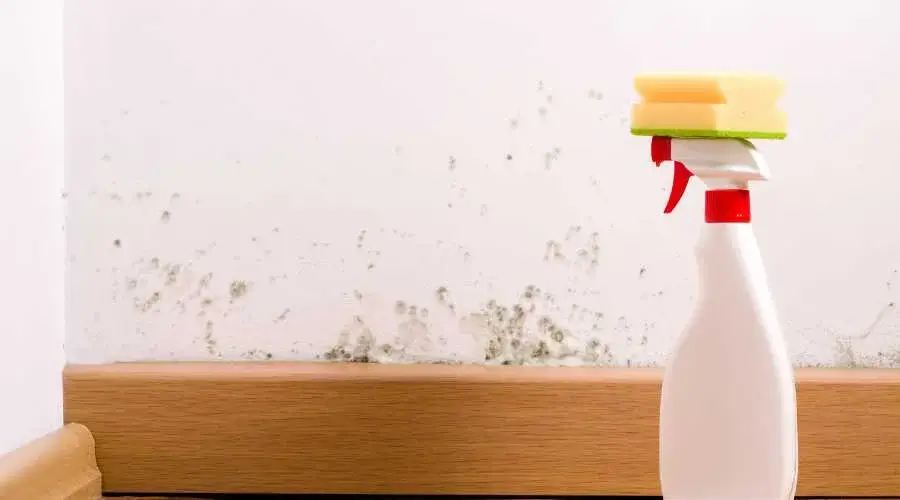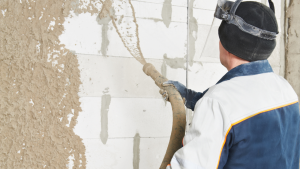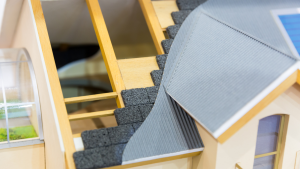Due to the humid climate, moisture poses a significant threat to stucco houses in East Brunswick, NJ, and throughout the northeastern United States. Adequate stucco installation is crucial to prevent moisture infiltration and preserve the integrity of your walls.
Overwet conditions can cause the buildup of fungus, mold, and mildew, potentially causing decay in the interior walls, especially if it reaches the wooden framework of the house. To safeguard your home, employing experienced stucco installers with the expertise to implement effective moisture control and protective measures is essential.
This article looks at the differences between managing moisture and protecting against it. It highlights how both strategies are crucial for keeping homes in the best shape. Understanding how these methods work together will help homeowners better protect their houses from potential damage.
Moisture Management
Moisture management refers to your wall system’s ability to remove any moisture that seeps into it. Like other building materials, modern stucco is porous, allowing water to enter the wall.
Some moisture will likely find its way into your walls whether your home has stucco, siding, or veneer. The critical question is, how does your wall system deal with this moisture?
Two main ways your walls can remove moisture are to flow out from the bottom, evaporate from the top, or sometimes both.
- Weep Screeds – Weep screeds at the bottom of walls serve as drainage openings, allowing moisture to “weep” away. These are a standard feature in modern siding, stone, and brick veneer installations.
- Air Vents – Air vents allow airflow through the wall, helping to dry out trapped moisture. The weep screed at the wall’s base vents air, but sometimes, gaps are at the top. Additional vents enhance airflow, allowing moisture to evaporate through the top of the wall. However, if not correctly installed, they might have the opposite effect. It’s crucial to prevent water from entering these vents and the wall cavity.
- Moisture Protection – Moisture protection helps keep your entire house and walls dry. To clarify, we’ll call keeping moisture out of your walls “exterior protection” and preventing water from entering your home “interior protection.
Stucco Installation Done Right
The synergy of moisture control and protection produces exceptional results, a recognition rooted in our expertise as skilled stucco contractors. Through numerous cleanup projects, we’ve witnessed the severe consequences of flawed installations.
Without effective moisture control, water accumulates within walls, leading to substantial damage over time. Even a minimal amount of unshielded water can cause significant issues, as it may infiltrate your home if not properly managed.
Excessive moisture, left unchecked, can potentially overwhelm any system component. Hence, the harmonious coordination between moisture management and protection is paramount, each fortifying the vulnerabilities of the other.
Even though water can seep through walls at times, our integrated systems make sure it happens rarely. Any leftover moisture quickly disappears as it evaporates or drains from the wall, keeping the structure solid and well-kept.
7 Methods to Detect Water Damage in Your Stucco Residence
- Damp-Looking Stucco – Occasionally, wet stucco is typical, especially after rain. However, if the plaster remains damp a week after rainy weather, it suggests water has penetrated. Please pay attention to consistently moist areas on the wall, as they could indicate potential entry points for water.
- Cracks – A crack in the stucco is a clear sign of water presence. Please don’t panic, as it doesn’t necessarily mean permanent damage. Nevertheless, it signals water entry, prompting the need for immediate action to prevent further harm.
- Missing Chunks of Stucco – Inspect your stucco for peeled-off siding fragments. Surface deterioration suggests that water has seeped underneath, causing problems.
- Cracks and Bubbles at the Wall’s Base Wall – Search for transparent bubbles or cracks along the bottom edges during your inspection. Water follows gravity, and most damage is likely to occur at the base of the wall.
- Window Caulking Damage – Notice any cracks or holes in the caulking around your windows? This suggests water entered the stucco. You may need to replace the windows if it’s been there for a while. That’s why regular stucco inspections are essential.
- Soft Drywall – Let’s go inside now for your investigation. Check the drywall beneath your windows. Does it feel smooth when you touch it? If so, that’s another clear sign of water damage. The exterior stucco and the affected drywall may need replacement in such cases.
- Basement Moisture – Before you go, inspect your basement walls. Dampness might be from water in the stucco, but other reasons exist. Make sure to check for additional factors before addressing the problem.
CMB East Brunswick Stucco & EIFS Repair, Greater East Brunswick, NJ Trusted Stucco Experts
Is water leaking through your walls and into the inside of your house? Have the external walls of your home developed mold or mildew? If so, a stucco check is necessary.
An examination may assist in identifying the causes of damage and outlining the required repair work. Remediation is nearly always needed if there is a problem with water infiltration.
The exterior must be completely removed and replaced during the remediation process. Both the interior moisture protection system and the moisture management system are included.
To arrange an inspection, contact the staff at CMB East Brunswick Stucco & EIFS Repair. Don’t wait for your home’s damage to worsen.




